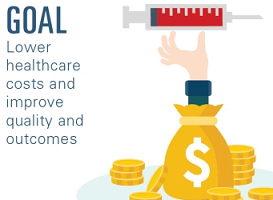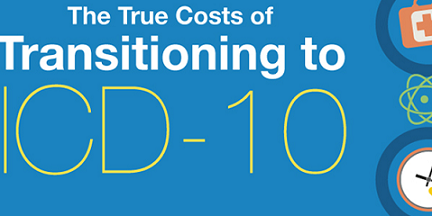Using a picture and visual graphics to represent data and information is called an infographic. It is a great way to display statistical data that shows comparisons or charts that come from research and reports. In these infographics see what’s important to physicians when in comes to teleheath, how e-prescribing can reduce errors, fraud & abuse, and see the history of electronic health records and how they may improve your health and health care in the future. See other infographics we have featured.
 Teleheath Index: 2015 Physician Survey
Teleheath Index: 2015 Physician Survey
American Well recently ran one of the largest physician surveys about telehealth ever conducted with QuantiaMD. The survey of more than 2,000 providers uncovered key factors important to physicians when it comes to telehealth. Take a look at their findings in this infographic. You can also download their eBook on the survey.
This infographic is brought to you by American Well (@AmericanWell), whose mission is to improve access to quality care and make it more affordable and transparent for consumers. They do this by using mobile and web technology to remove barriers such as distance, mobility, and time.
Electronic Prescriptions for Controlled Substances
Healhcare organizations are facing a serious societal problem that has become more pronounced in the last 15 years, the widespread abuse of prescription drugs. Organizations who e-prescribe have seen reductions in errors, fraud and abuse, and identity theft along with improvements in efficiency and patient satisfaction. See all the stats in the complete infographic brought to you by Caradigm (@Caradigm), an award-winning population health company dedicated to improving patient care, advancing the health of populations and reducing healthcare costs. Its enterprise software portfolio encompasses all capabilities critical to delivering effective population health management, including data control; healthcare analytics; care coordination and management; and wellness and patient engagement.
 ONC’s Electronic Health Records
ONC’s Electronic Health Records
How do electronic health records (EHRs) connect you and your doctor? In the past, medical data was only stored on paper, making it difficult for your health care providers to share your information. Between 2001 and 2011, the number of doctors using an EHRsystem grew about 57%, making it easier for you and all of your doctors to coordinate your care, and often reducing the chance of medical errors. Where are electronic health records headed? In this infographic, view the history of electronic health records and see how they may improve your health and health care in the future.
This infographic is brought to you by The Office of the National Coordinator for Health Information Technology (ONC) (@ONC_HealthIT) who is at the forefront of the administration’s health IT efforts and is a resource to the entire health system to support the adoption of health information technology and the promotion of nationwide health information exchange to improve health care. ONC is organizationally located within the Office of the Secretary for the U.S. Department of Health and Human Services (HHS).
